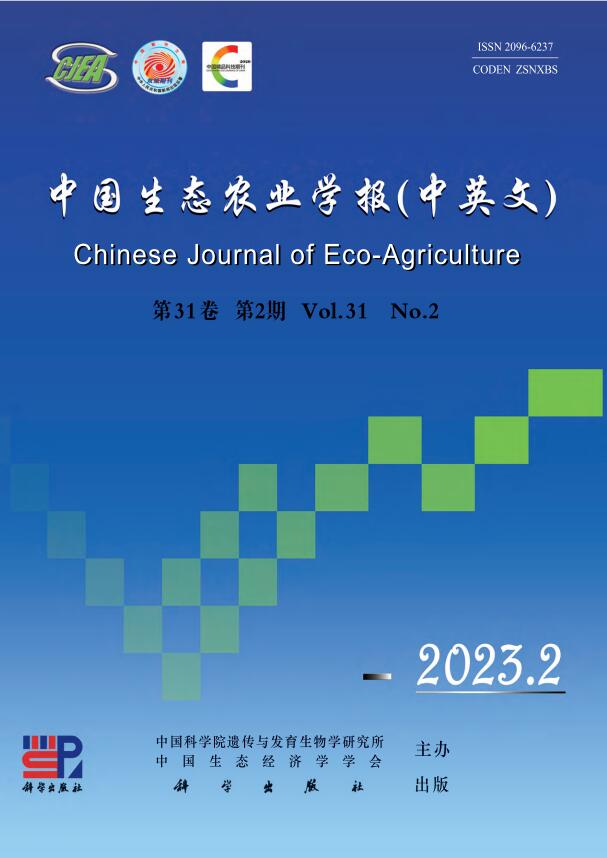LI Yangyang,
LI Chi,
REN Junyang,
LI Zhi,
ZHANG Jinfeng,
LYU Rongrong,
ZHANG Heng,
WU Dan,
WANG Qin,
ZHOU Qingyuan,
YIN Jiaming,
LI Jiana,
LIU Liezhao,
TANG Zhanglin
2021, 29(8): 1327-1338.
doi: 10.13930/j.cnki.cjea.200877
Abstract:
The yield and quality of Brassica napus L. are often affected by drought stress in China. To identify drought-tolerant and drought-sensitive germplasms, screen for indices of drought tolerance to reduce cost and improve efficiency, provide a basis for breeding drought-tolerant varieties, and investigate the mechanisms of drought tolerance, 229 B. napus accessions were subjected to two water treatments (drought stress and well watering) at the seedling stage. The shoot fresh weight, shoot dry weight, root fresh weight, root dry weight, leaf peroxidase activity, malonaldehyde content, proline content, soluble protein content, soluble sugar content, and leaf relative water content were measured. The drought resistance index, clustering analysis, subordinative function, principal component analysis, and gray correlation analysis were used to comprehensively evaluate drought tolerance. The correlation coefficients between the drought resistance index of each trait and the average value of the subordinative function, composite value of the principal component factors, and comprehensive relation degree and those among the drought resistance indexes of the ten traits were calculated to determine the drought tolerance index. The results showed significant differences between the drought-stressed and well-watered plants at the seedling stage. During drought stress, the leaves of drought-stressed plants gradually wilted and curled to different degrees, and the leaves were born slowly and became smaller, while the old leaves turned yellow. After 30 days of stress, the drought-stressed plants were shorter, weaker, and had lower biomass than the well-watered plants. The shoot fresh weight, shoot dry weight, root fresh weight, leaf relative water content and soluble protein content were lower, and the leaf peroxidase activity, malonaldehyde content, proline content, and soluble sugar content increased under drought stress. The root dry weight did not differ between drought stress and well watering. The 229 B. napus accessions were divided into eight groups, and the accessions of each group showed different drought tolerance characteristics. The significant correlation between the average value of the subordinative function, composite value of the principal component factors, and the comprehensive relation degree indicated that the comprehensive evaluation was reliable. Therefore, by means of the subordinative function, principal component analysis, and gray correlation analysis, accessions RR002, 9801C, Yan81-2, 07037, Zheyou758, and 09-P64-1 were identified as drought tolerant. Accessions 11-P30, CY16PXW-35, 08-P35, 09-P36, Jia972, and A148 were drought sensitive. The correlations of shoot fresh weight, shoot dry weight, root fresh weight, root dry weight, leaf proline content, soluble sugar content with the average value of the subordinative function, composite value of the principal component factors, and the comprehensive relation degree were significant with high correlation coefficients, as did those among shoot fresh weight, shoot dry weight, root fresh weight, and root dry weight. The shoot fresh weight, leaf proline content and soluble sugar content can serve as rapid, simple, and accurate traits to identify comprehensive drought tolerance at the seedling stage in B. napus.










